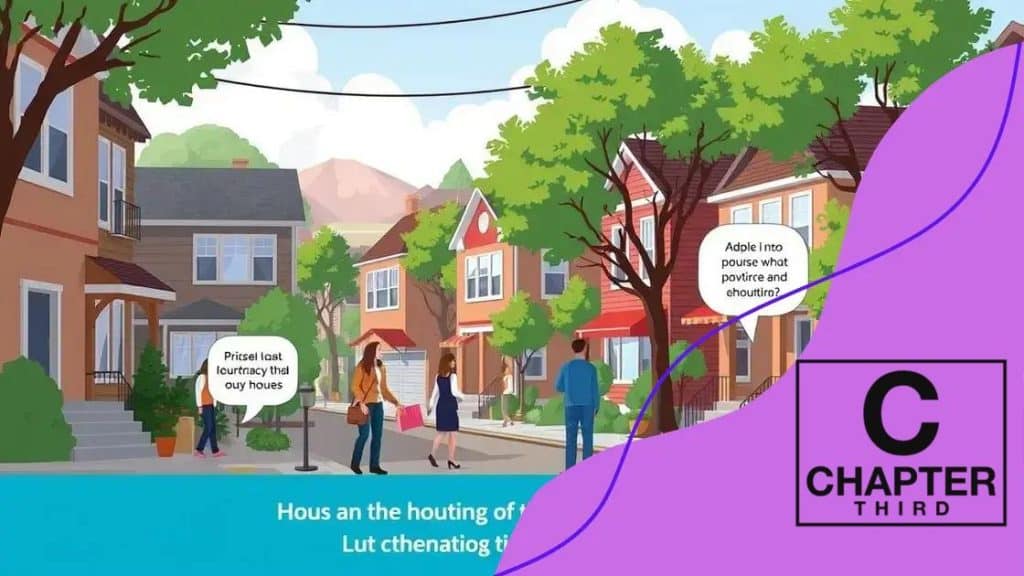Federal housing vouchers increased for 2025: what to know

Federal housing vouchers increased for 2025 provide significant financial relief to low-income families, improving their access to affordable housing and enhancing their overall quality of life.
Federal housing vouchers increased for 2025, potentially transforming accessibility for many struggling with housing costs. Have you ever wondered how these changes might impact your community?
Understanding federal housing vouchers
Understanding federal housing vouchers is essential for anyone seeking assistance in finding affordable housing. These programs help low-income families pay for housing costs.
Many people may not realize how these vouchers can transform lives. By covering part of the rent, they reduce the financial burden on tenants. This assistance allows them to focus on other crucial aspects of their lives, such as education and employment.
What Are Federal Housing Vouchers?
The federal housing voucher program is a government initiative designed to assist households with low income. It enables families to afford decent housing in the private market, which can often be challenging.
- The vouchers are typically provided through local public housing agencies.
- They can help families pay a portion of their rent directly to landlords.
- Eligible households include those with children, the elderly, and individuals with disabilities.
With the new increases for 2025, more families can take advantage of this program. Many will experience improved living conditions, which can lead to better opportunities in education and employment. This financial support is vital in urban areas where housing costs are soaring.
How Do Vouchers Work?
Once a family receives a voucher, they can choose a house or apartment that fits their needs. The housing authority will determine how much rent assistance a family will receive. This usually depends on their income level, family size, and the local housing market.
Moreover, families can benefit from the flexibility these vouchers offer, allowing them to move to different neighborhoods. This is particularly important as it helps achieve better living standards and access to resources like schools and jobs.
- Your rent must be reasonable compared to similar units in the area.
- Landlords must agree to participate in the program.
- The property must pass a safety and health inspection.
As we shed light on federal housing vouchers, it’s clear they play a critical role in shaping the future of housing assistance. By providing this support, more individuals can secure a stable place to live.
Key changes for 2025
The key changes for 2025 regarding federal housing vouchers promise to enhance support for families in need. These changes are crucial in improving the affordability of housing and expand access to previously unavailable options.
One significant adjustment is the increase in the voucher amounts. This means families can expect higher assistance levels, reducing the gap between their income and housing costs. This raise not only helps families pay their rent but also allows them to save more for emergencies and other essential needs.
Increased Funding
Another important change is the increase in funding allocated to local housing authorities. This increase ensures there are more resources available for managing the program and administering the vouchers effectively.
- More funds mean faster processing times for applications.
- Housing authorities can offer better support and services.
- Increased outreach efforts will help more families learn about the program.
Additionally, the criteria for eligibility have been updated. This means that more families may qualify for assistance. These changes can include adjustments to income limits, empowering more individuals to secure a place to live.
Focus on Expanding Availability
The 2025 updates also emphasize expanding the availability of vouchers in areas with high demand. This could help ease the burden many families face in urban centers where rent prices are high.
These expansions will provide those eligible with greater housing choices, allowing them to find homes in stable neighborhoods with good schools and job opportunities. As a result, this flexibility can contribute to a better quality of life.
- More housing options align with the needs of families.
- Diverse neighborhoods can foster community engagement.
- Accessibility to services will improve with better location choices.
In summary, the key changes for 2025 focus on increasing support for families in need, enhancing the benefits of the voucher system, and expanding accessibility to quality housing.
How these changes affect low-income families

The changes in federal housing vouchers directly impact low-income families in many ways. With increased funding and higher assistance amounts for 2025, these families stand to gain significantly, allowing them to secure better housing options.
Many families face challenges when it comes to affording rent. With the updated voucher amounts, they will receive more help in covering their monthly costs. This support will lead to reduced financial stress, enabling families to allocate funds for other vital aspects of their lives.
Improved Housing Stability
One of the most important effects is increased housing stability. Families who may have previously lived in unstable conditions will find it easier to maintain consistent housing.
- Stable housing can lead to better job performance.
- Children can experience improved academic success.
- Communities can become stronger as families remain in their neighborhoods.
These benefits contribute to healthier and more engaged families, elevating their overall quality of life.
Access to Better Opportunities
Increased access to housing means low-income families can move to neighborhoods with better amenities, schools, and job opportunities. Such changes allow for greater participation within the community.
Moreover, these families may have more flexibility when choosing where to live. They can select locations that better suit their needs, which, in turn, supports their economic growth.
- Better schools enhance educational outcomes for children.
- Proximity to jobs reduces commute times, saving money.
- Access to parks and recreational facilities contributes to healthier living.
As families experience these positive changes, the ripple effects can lead to stronger communities. Strong neighborhoods often work together, providing mutual support and resources for one another. This interconnectedness elevates the entire community.
Benefits of increased housing vouchers
The benefits of increased housing vouchers are significant for low-income families. With the rise in voucher amounts for 2025, many families will find it easier to afford their housing costs, leading to improved living situations.
These vouchers help reduce rent burdens, allowing families to use their income for other essentials such as food, healthcare, and education. This financial relief contributes to the overall well-being of households, enabling them to thrive rather than just survive.
Enhancing Quality of Life
Improved housing stability leads to a better quality of life. Families who receive the assistance are less likely to face eviction. Stable housing provides a solid foundation for children, allowing them to focus on their education and personal growth.
- Access to safe and stable housing reduces stress levels.
- Children can consistently attend school without disruptions.
- Families are more likely to participate in community activities.
Additionally, living in better neighborhoods encourages community engagement. Families can form lasting relationships and support networks, fostering a sense of belonging and security.
Economic Mobility
Increased housing vouchers also promote economic mobility for families. By providing greater access to affordable housing in desirable areas, families can move closer to job opportunities.
When families have easier access to well-paying jobs, it opens doors for upward mobility. This change not only benefits the individuals but also contributes to the local economy through increased spending.
- Better educational opportunities lead to higher earning potential.
- Access to public transportation improves job accessibility.
- Greater neighborhood resources support skill development.
Overall, the benefits of increased housing vouchers create a ripple effect, impacting families, neighborhoods, and communities positively. By supporting low-income families, these programs help foster more vibrant, resilient communities.
Next steps for applying and utilizing vouchers
Understanding the next steps for applying and utilizing vouchers is crucial for families looking to benefit from federal housing assistance. The process may seem overwhelming, but breaking it down into manageable parts can help.
The first step is to check your eligibility. Families can reach out to their local public housing agency to confirm if they qualify for the program. This includes gathering necessary documents such as income statements, family composition, and any previous housing history.
Application Process
Once eligibility is confirmed, families can begin the application process. It usually involves filling out a detailed form provided by the housing authority.
- Complete the application form with accurate information.
- Submit the required documentation to support your application.
- Attend any scheduled interviews or orientations as instructed.
After submission, families should stay in contact with their local agency. It is essential to follow up and check on the application status, as this can expedite the process.
Utilizing Your Voucher
If granted a voucher, the next step is to understand how to use it effectively. Families can start looking for housing options that accept vouchers, which may include various types of rental units.
It’s also important to know the rules that come with using a voucher. Families need to find a suitable place within a set timeframe and ensure the rent is reasonable compared to similar local properties.
- Review the list of approved landlords from the housing agency.
- Schedule viewings for potential housing options.
- Be prepared to adhere to housing quality standards set by the agency.
Utilizing the voucher wisely can lead to a more stable living situation and greater access to opportunities.
In conclusion, the changes to federal housing vouchers for 2025 are set to significantly benefit low-income families. With increased funding and flexibility, these families will have improved access to affordable housing options. Understanding how to apply for and utilize these vouchers is crucial for making the most of the resources available. As families navigate this process, they can look forward to better stability, enhanced quality of life, and greater opportunities in their communities.
FAQ – Frequently Asked Questions about Federal Housing Vouchers
Who qualifies for federal housing vouchers?
Eligibility for federal housing vouchers typically includes low-income families, the elderly, and individuals with disabilities. Local housing authorities can provide specific eligibility criteria.
How do I apply for a federal housing voucher?
To apply for a federal housing voucher, you need to contact your local public housing agency, fill out an application form, and provide necessary documentation to support your application.
What should I do after receiving a voucher?
After receiving a voucher, you should start looking for housing options that accept the voucher and ensure that the rent is reasonable and within the program’s guidelines.
What are the benefits of using housing vouchers?
Using housing vouchers can provide financial relief by reducing rent costs, improve housing stability, enhance access to better neighborhoods, and facilitate community engagement.





